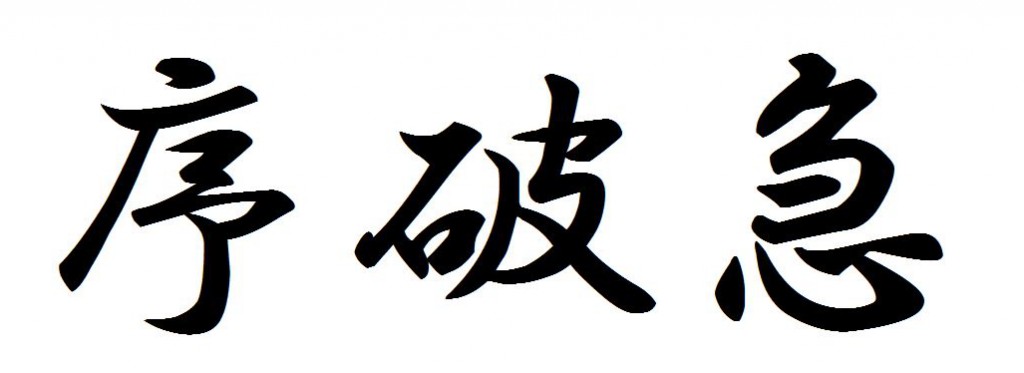*The target readers are those who will make a speech or a presentation in Japanese.
起 (Ki), 承 (Sho), 転 (Ten), 結 (Ketsu) is a well-known method of structuring Japanese scripts. One of the strengths of this structure is that you are able to narratively express what you want to convey to your audience. You may also have the benefit of making your script sound familiar with your audience because every Japanese person learns this method in school. In this article, you will learn how you can utilize the 起 (Ki), 承 (Sho), 転 (Ten), 結 (Ketsu) Structure for your Japanese script.
Well-known Method of Structuring Japanese Script: Ki-Sho-Ten-Ketsu
起 (Ki)
The Chinese character, 起 (Ki) means to rise, raise, get up, set out, start, appear, launch, etc. In this part, you are going to set up an introduction, such as, main characters, their backgrounds, their relationships, the world they live in and hints for the climax. If you give surprising differences between the 起 (Ki); introduction and the 結 (Ketsu); conclusion, it will work effectively.
Example
私は日本の富山県で生まれました。
I was born in Toyama prefecture, Japan.
両親は学校の先生でとても厳しい教育をされでした。
My parents were school teachers and gave me a strict education.
私は素直で真面目な子供に育ちました。
I grew up to be an honest and obedient child.
承 (Sho)
The Chinese character, 承 (Sho) means bear, carry, hold, continue, undertake, take charge, receive, etc. In this part, you are going to continue on from the introduction and lead into some twists. However, major changes do not happen yet. This is the process of leading up to the climax. It is said that the 承 (Sho) part can occupy 60% to 70% of Japanese scripts in order to make them consistent. In other words, in order to explain why the 転 (Ten); climax happens.
Example
中学生になった頃、学校の勉強がわからなくなりました。
When I was in junior high school, the material became too difficult for me to understand.
両親からたくさん怒られました。
My parents got angry with me a lot.
学校、親、先生、勉強が大嫌いになりました。
I came to dislike my school, parents, teachers and studying.
ある日、学校に新しい先生が来ました。
One day, a new teacher came to my school.
先生は私に勉強でなくテニスをするように薦めました。
The teacher suggested that I start playing tennis, not study.
私はテニス部に入ることにしました。
I decided to join the tennis club.
転 (Ten)
The Chinese character, 転 (Ten) means turn, twist, suddenly, abruptly, quickly, etc. In this part, you are going to turn or twist your story to another, new or unknown topic. Once 転 (Ten) has arrived, new characters should not appear. Also, the change should be the biggest twist leading to the climax.
Example
私にはスポーツの才能があるみたいでした。
It seemed that I was a talented player.
初めて出場した大会で私はいきなり優勝しました。
I won the champion tennis match even though it was my first time.
そして、私はプロのチームにスカウトされました。
Then, I was scouted by a professional team.
私はまだ勉強が苦手です。ですが、今はプロのテニス選手として世界中で活躍しています
I am still not good at studying, but I am participating actively as a professional tennis player all over the world.
[adsense]
結 (Ketsu)
The Chinese character, 結 (Ketsu) means to tie, bind, contract, join, organize, do up hair, fasten, etc. In this part, you are going to wrap up your story and make your conclusion.
Example
その先生のような、子供の才能を引き出してあげられる体育の先生になること、それが私の夢です。
My dream is to become a PE teacher who can discover unknown talents from children like the teacher who helped me.
Pros and Cons
起 (Ki), 承 (Sho), 転 (Ten), 結 (Ketsu) Structure is generally used in movies, comics, games and fairy tales. It is appropriate for making a narrative story. Your audience would be interested and say to themselves, “What will happen next?” and “Tell us more”. On the other hand, it is not appropriate for telling something logically, that is to say, for papers, essays and business documents. In such documents the conclusion should be apparent at the beginning as opposed to the起 (Ki), 承 (Sho), 転 (Ten), 結 (Ketsu) Structure. If you try to use this structure, for example, in a business document, people would get irritated and frustrated and ask you “What are you trying to say?”
Conclusion
In regards to making a Japanese script for a speech, it can be used effectively, yet you need to be good at presentation skills, such as intonation, volume, eye contact and movement because that is the only way of attracting audiences without logical devices. However, even if you aren’t, you can still use this structure by giving a short guide as shown below at the beginning. That way, your audience can understand why you are going back to say, when you were born, and may be interested in your story.
Example
私の夢は学校の先生になることです。この話をするには、まず私の生い立ちから話さないといけません。
My dream is to become a teacher. In order to tell you this story, firstly, I need to tell you my background.
Recommended Link
Distinguish Your Japanese Script Jo-Ha-Kyu Structure
Apply the Essay Structure to Your Japanese Script
Imitate Great Speaker: How to Write Your Japanese Script
Road-Map: How to Make Your Japanese Speech
For Your Japanese Speech; Imitate Great Speakers II
Author and English Editor
Author – Takuya Tokiwa
Takuya is the co-founder, Project Director of Wasabi and a serial entrepreneur in the education field. He is utilizing all of his knowledge and experiences for innovating Japanese learning.
English Editor – Natalia Weiner
Natalia is the Editor and Web Content Manager of Wasabi. She majored in Writing with a minor in Journalism and graduated from Loyola University Maryland in 2013. She was the Assistant Content Editor for the popular culture website EmcBlue, and has written and edited for a variety of publications in both Japan and the United States.

Distinguish your Japanese Script: Jo-Ha-Kyu Structure

Encourage Someone with Eight Cool Japanese Proverbs



